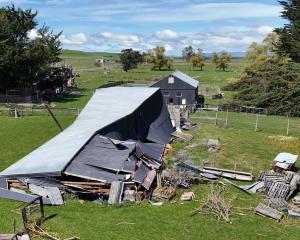Cycling is the thing this month - as it was more than 100 years ago. It is still promoted as a healthy sport.
To tie in with Bike Wise month, the Otago Settlers Museum is displaying some of the older bicycles in its collection as well as some of the latest developments. Charmian Smith talks to curator Peter Read.
Penny-farthings, velocipedes and boneshakers are the dinosaurs of the cycling world, and were dangerous toys for young daredevils.
But once the safety bicycle became popular in the 1890s, everyone, young and old, male and female could ride.
The safety bicycle was driven by a chain so you were not trying to pedal the steering wheel, the wheels were smaller so your feet could reach the ground safely and pneumatic tyres made it more comfortable to ride.
Cycling quickly took off as a healthy sport and Dunedin people, even with the hills, enjoyed it.
Cycling clubs were formed and as spring approached people would dust off their bicycles and take a spin into the country.
Reports of club events were published in newspapers - the ladies' Mimiro cycling club (the name "signifying `to advance swiftly' and therefore very appropriate", according to the Otago Witness of the time) as well as the Dunedin and Otago cycling clubs.
Cycling was an adventurous thing for women to do in those days, and they had to put up with "annoyances from larrikins," but cycling also helped emancipate women.
Chaperones could often not cycle, so young women found a new freedom.
Many wanted to learn to ride and in 1896, Miss E. M. Statham and Miss E. T. Rigg even set up an agency in Dunedin to sell and hire ladies' bicycles, and to instruct women in the finer points of cycling etiquette and how to survive criticism, amazement and amusement from pedestrians.
However, the long skirts worn at the time could be dangerous on a bicycle so some daring women started to wear "rational dress", loose knickerbockers.
Mrs S. R. Stedman, wife of a leading Dunedin cycle dealer, wore an outfit of navy blue fine serge, with knickers drawn into a Melton band with three buttons, navy blue gaiters, and a tight-fitting Norfolk coat either opened over the vest or worn with a blouse, according to the Otago Witness in October 1895.
She also had a matching skirt with buttons up the side which she carried on the handlebars and put on when not riding her bicycle.
But most women continued to wear long skirts, sometimes tied to their shoelaces to prevent them blowing above a respectable level.
Peter Read, curator of the exhibition says that from the 1890s until about 1950, the bicycle enjoyed a golden age. Bicycles were an important means of transport as few people owned cars.
People used them for getting to work or school, to visit friends and relations and to go on holiday, as well as for recreation - although Dunedin's hills made it a little more difficult than in some flatter cities.
Doctors, nurses, policemen and even firemen found bicycles a convenient and fast means of transport, less work and cheaper than keeping a horse and trap.
The Post Office had a big fleet of bicycles for delivering telegrams, newspaper boys used them, and many bakers, butchers and other firms had bicycles with large baskets for deliveries.
In its exhibition, the museum has a delivery cycle from the Dunedin printing and stationery firm Coulls Somerville Wilkie.
From the 1950s, when more people could afford cars, the role of the bicycle changed.
Not used so much for urban commuting (except during the oil shock of the 1970s and again now), cycling became more of a recreational pursuit and bicycles diversified according to use.
Racing bikes or 10-speeds were introduced in the 1970s. BMX bikes became popular in the 1980s and mountain bikes in the 1990s.
New cycling clubs formed to promote these sports, and cycling has become popular again for recreation and health.
The Central Otago Rail Trail attracts people from all over the world, and several other local cycleways are proposed.











